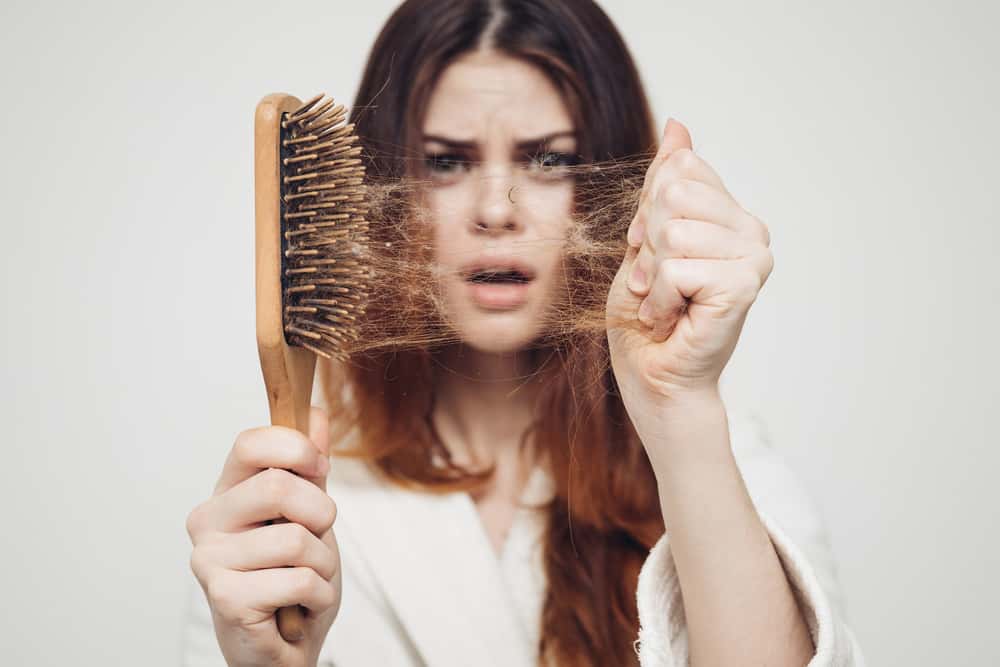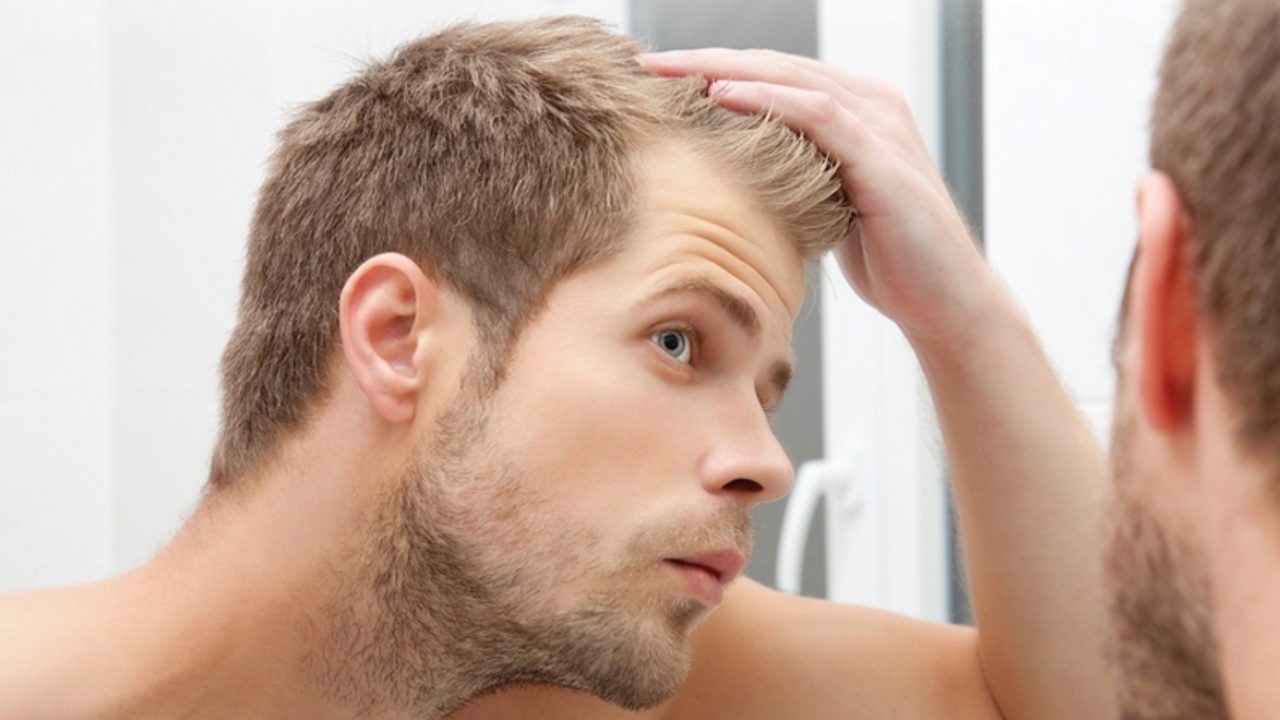Source: Thailand Medical News Sep 20, 2019 6 years, 3 months, 1 week, 4 days, 9 hours, 13 minutes ago
The hair on one head goes through a life cycle that involves growth, resting, and shedding. It’s common for people to lose around 100 hairs a day. If you experience more sudden loss, loss in patches, or overall thinning, you may want to see your doctor. Some conditions like telogen effluvium or hair loss after pregnancy, may resolve on their own. Your healthcare provider may be able to diagnose if your hair loss is caused by things like thyroid issues, stress, scalp infections, androgenic alopecia, or simply aging.
Some shedding is temporary and may respond well to changes in diet, certain treatments, or lifestyle changes. Other loss may be more permanent or not stop until an underlying condition is treated.
By age 40 about 50 percent of all males will experience hair loss due to hereditary conditions like androgenic alopecia (male pattern baldness). Likewise, more than 50 percent of females will experience genetic hair loss (female pattern baldness) before the age of 70.
Other causes of hair loss include medical conditions, like alopecia areata, scalp infections, or trichotillomania (hair-pulling disorder) or hormonal fluctuations from pregnancy, childbirth, menopause, or thyroid issues.
Hair loss can also occur due to medications or supplements, such as those
used for cancer, high blood pressure, depression, or arthritis or even radiation treatment for conditions like cancer.
Stress, whether physical or emotional is also another contributing factor.
Too much hair treatments like colouring, bleaching, straightening and also hot styling can lead to hair loss along with styling practices, like wearing tight ponytails or cornrows
There are many things you can do to slow or stop hair loss. But what to do depends on the reason why you’re losing your hair.
1) Proper Hair Care
A) Regular Washing
Washing hair daily may protect against hair loss by keeping the scalp healthy and clean. The key is to use a mild shampoo. Harsher formulas may dry hair and cause it to break, leading to hair loss.
B) Coconut oil
According to various studies, researchers believe that cococnut oil may help prevent hair damage from grooming and ultraviolet (UV) light exposure. Lauric acid found in coconut oil helps bind protein in hair, protecting it from breakage at the root and strand. Massaging coconut oil into the scalp may promote better blood flow and help with regrowth.
C) Olive oil
Olive oil can ve used to
condition hair , protecting it from dryness and associated breakage. Olive oil is also a central ingredient to the Mediterranean diet,which may help slow genetic hair loss.
Consider applying a couple tablespoons of olive oil directly to hair and letting it sit for 30 minutes before washing out.
D) Light Styling
Skip tight braids or ponytails that may pull on hair at the root and potentially lead to excessive shedding. While you’re at it, let your hair air dry to avoid irritating your scalp. Heat stylers, like curling or straightening irons, may also damage or break the hair shaft.
E) Hair Treatments
Chemical treatments, like perms or hair color, may also damage hair and scalp. Ask your hairstylist about alternatives, like organic hair colours or dyes and others that don’t contain ammonia, peroxide, or para-phenylenediamine (PPD).
2) Dietary Needs
A) Mediterranean diet
A study conducted in 2018 revealed that a diet containing raw vegetables and fresh herbs, like the Mediterranean diet, may reduce the risk of androgenic alopecia (male and female pattern baldness) or slow its onset. Best results were observed when participants consumed high amounts of these foods such as parsley, basil, salad greens more than three days a week.
B) Protein
Hair follicles are made mostly of protein called keratin. One study of 100 people with hair loss noted several nutritional deficiencies in participants, including amino acids that serve as the building blocks of protein. Researchers have also indicated that eating a diet rich in protein may help prevent hair loss. Healthy choices include foods like eggs, nuts, beans and peas, fish, low-fat dairy products, chicken, and turkey.
C) Vitamin A
Vitamin A is composed in part of retinoids, which has been shown to increase the rate of hair growth. Vitamin A may also help with sebum production,keeping the scalp healthier and able to retain more hairs. Fill your plate with foods rich in vitamin A, such as sweet potatoes, sweet peppers, and spinach, just to name a few.
3) Supplements
A) Multivitamins
Medical researchers have determined that vitamins A, B, C, D, iron, selenium, and zinc are all important to the hair growth and retention processes, specifically with cell turnover. You can find daily multivitamins at most grocery stores or drugstores or ask your doctor to prescribe one to you.
B) Vitamin D
A past study has indicated that vitamin D is associated with nonscarring alopecia. Treating deficiencies may help with regrowth. Speak with your doctor about taking 800 to 1000 IU daily.
C) Biotin
Biotin or vitamin H or B7 is involved in fatty acid synthesis in the body. This process is essential to the hair life cycle and you may experience hair loss if you have a deficiency. Speak with your doctor about taking3 to 5 milligrams daily.
D)Saw Palmetto
Derived from the fruit of American dwarf pine trees, this herb may help men maintain levels of testosterone. One 2004medical journal article revealed that some 60 percent of participants taking saw plamettto experienced improved hair growth. The dosage in the study was 200 milligrams daily.
E) Ginseng
Ginseng contains certain phytochemicals that may promote hair growth on the scalp. Further study is needed to recommend specific dosages. In the meantime, speak with your doctor about taking ginseng supplements or consider trying topical solutions that contain this ingredient.
4) Medical Treatments
A)Laser Therapy
Low-level lasers may help improve hair density for people with genetic hair loss and loss due to chemotherapy. This option is also called red light therapy, and it may work by stimulating epidermal stem cells. It may take a lot of treatments to see results.
B) Platelet-Rich Plasma
Injecting platelet-rich plasma (PRP) into the scalp helps stimulate growth in areas already impacted by hair loss. Blood is run through a centrifuge to separate out the platelets and then injected into the scalp. In one 2017 study, 11 participants saw 30 percent more growth in thinning areas after four sessions.
5) Medications
A) Minoxidil
Otherwise known as Rogaine or regaine, this over-the-counter (OTC) drug is known to work for around 55% of women who try it, according to the Mayo Clinic. Apply the liquid or foam to your scalp each day. Side effects include scalp irritation and acne at the site of application. Rarer side effects include irregular heartbeat and blurred vision.
B) Finasteride
Also known known as Propecia, this prescription pill may help slow hair loss and even promote new growth. It is approved for men and works better for men under the age of 60, according to the Mayo Clinic. Women who are or who may become pregnant should avoid this medication.
C) Phenylephrine
Topical phenylephrine may help with hair loss due to styling by stimulating the follicle musclesto contract. This makes it harder to pull out hairs during brushing, for example.
Unfortunately, you’ll need to keep an eye out for this medical solution. Scientists have developed a specific formula called AB-102 but it has not yet been released to the public.
6) New Age Protocols
A) Essential Oils
Essential oils may help reduce hair loss. A 1998 study divided 86 people with alopecia areata into two groups, one of which cedarwood oil mixed with lavender and rosemary into their scalps. After seven months, 43 percent of that group showed improvement in their condition. Other essential oils to consider include lavender, lemongrass, and peppermint. Try mixing couple drops of any or all of these oils with a couple tablespoons of carrier oil, like jojoba or grapeseed, and apply to the scalp for 10 minutes before washing. Always be careful when buying esentials and only buy from a reliable organic supplier and also be careful as essential oils can also have toxic effects if used wrongly.
B) Onion Juice
People with alopecia areata may see regrowth after applying crude onion juice to their scalps twice a day. While research on this treatment is limited, the juice did appear to promote growth in nearly 87% of participants in a small 2014 study. Scientists believe the magic lies in the onion’s sulphur content.
C) Massage
We know scalp massage feels good, but can it help grow your hair, too? Maybe.
One small 2016 study showed participants seeing results with as little as four minutes of massage a day over the course of 24 weeks.
D) Yoga
Hair loss caused by stress may respond well to yoga. Try these stress-relieving yoga poses to prevent and slow hair loss: Downward Facing Postures, Forward Bend, , Shoulder Stand, Fish Pose, and Kneeling Pose.
Concluding Remarks:
Always see your doctor if you are experiencing sudden or extreme hair loss. Some conditions, like thyroid issues, may not respond to home remedies and require treatment of the underlying causes. Also keep in mind that any treatment you use may take anywhere from six months to a year to show improvement on areas where hair loss has already occurred.Before starting on any supplements or home remedies or medications, always consult a doctor and tell the doctor what you are planning to do and also make sure that the doctor knows any underlying medical conditions that you might be having or have been having or had.Thailand Medical News takes hold no liability for readers attempting self treatments without consulting a doctor.

